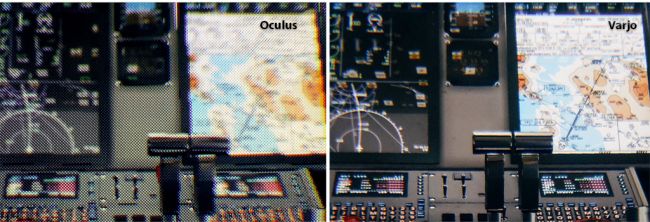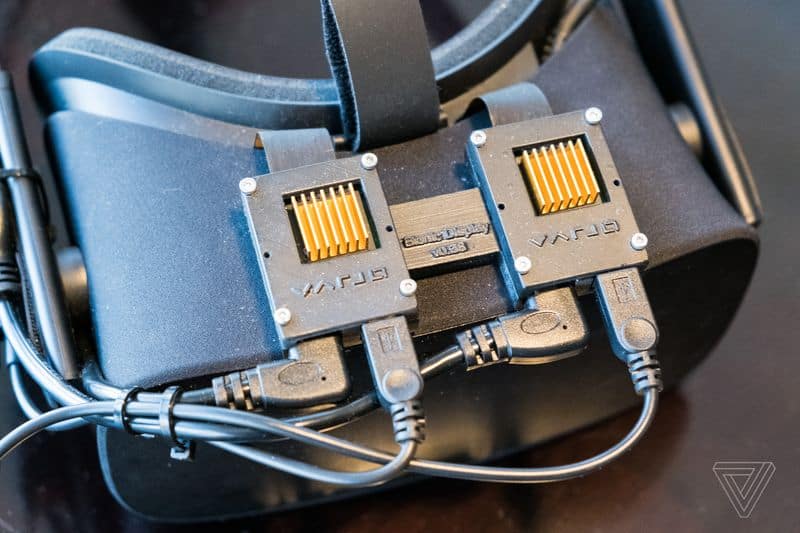We know immersive technologies are changing fast, but the VR headset resolution announced by Varjo even caught us by surprise. The Finnish startup revealed that they are working on a headset with 70 megapixel resolution. Our current high-end HMD’s? About 1.2 megapixels. It would be a game-changing development.
Here’s the news from their press release:
June 19, 2017 – Helsinki – Varjo™ (Shadow in Finnish) Technologies today announced it has emerged from stealth and is now demonstrating the world’s first Human eye-resolution headmounted display for upcoming Varjo-branded immersive computing products.
Designed for professional users and with resolutions more than 70X beyond any currently shipping or announced head-mounted display (including Magic Leap™), this major technology advancement enables unprecedented levels of Virtual Reality, Augmented Reality and Mixed Reality (VR/AR/MR) realism. This is accomplished by Varjo’s patented technology that replicates how the human eye naturally works, creating a super-high-resolution image to the users gaze direction. This is further combined with video-see-through (VST) technology for unparalleled AR/MR capabilities.
Varjo’s VR headset resolution
The idea behind Varjo’s HMD is to mimic both the resolution and natural behavior of the human eye. Human eyes are close to 576 megapixels, far beyond the 70 megapixels of their headset. But only around 7 megapixels are critical (to understand the way we see, it’s worth watching this video). We have incredible detail in the fovea (the high resolution area of our eyes) but it only spans 2° of our field of view. Visual acuity declines by 50% every 2.5° further away from the center. Our peripheral vision is blurry and in black and white.
Varjo’s headset does something similar with high-resolution displays at the center of your vision and low-resolution elsewhere. The high-res display they needed was already commercially available:
Sony’s broadcast cameras use an OLED microdisplay that’s only 0.7 inches diagonally, but manages to cram in a full HD resolution:1920×1080. That works out to more than 3,000 pixels per inch—enough to let you see everything there is to see, without eyestrain or effort.
Drop that into the middle of a standard HMD and we get the detail we need right at the center of our vision. It leads to a remarkably different experience in VR – or as Peter Rubin described it in Wired,
If I looked at something through that small rectangle—the text on the virtual computer monitors, the tiny numbers in the plane’s instrument panels—it stopped looking like VR. It just looked like…well, like real life.

Implementing this requires highly accurate eye-tracking, a project others are working on. Fove has already released a dev kit HMD and HTC will soon offer an add-on from Tobii Gaming. But both of the latter are about user interaction, not display quality.
Varjo’s VR headset resolution project will also need displays that seamlessly transition from high-density to low density without visible boundaries. In their demo model, the center display is still obvious, along with the extra cables to power the arrangement.

VR, AR and Mixed Reality
So how does AR and mixed reality fit into this? You can’t see through Varjo’s VR headset to include the real world. But they plan on using cameras to feed outside data to the HMD. As The Verge notes:
The team wants the Varjo headset to handle AR at human eye resolution, too. But they don’t plan to build a see-through heads-up display like HoloLens or Google Glass. Rather, they want to use cameras on the face of the Varjo headset to re-create the outside world on the display. That’s a challenge in its own right, especially because of the limitations of mobile cameras.
You can test the limitation on mobile cameras if you a Samsung Gear VR headset. Set the device to Passthrough Mode and you’ll be using the camera in your phone. It’s somewhat disorienting, as you lack peripheral vision and everything blurs when you turn your head quickly.
Still, it’s a tantalizing prospect if they can deliver a high-resolution mixed reality device even with limitations on the field of view.
Varjo’s plans
Varjo just emerged from stealth mode and is working rapidly to get the product to the market. A Steam-compatible dev kit will be released by the end of the year. The consumer model will appear in early 2018.
As you might imagine, this HMD won’t be cheap. For now, they’re targeting high-end professions such as architecture and medicine where visual fidelity is critical. But if successful, prices will plummet.
Like the early days of cinema with the Lumière Brothers and George Méliès, our dreams outstrip our technology. But not for long. Varjo’s project could be the break-through device.
Emory Craig is a writer, speaker, and consultant specializing in virtual reality (VR) and artificial intelligence (AI) with a rich background in art, new media, and higher education. A sought-after speaker at international conferences, he shares his unique insights on innovation and collaborates with universities, nonprofits, businesses, and international organizations to develop transformative initiatives in XR, AI, and digital ethics. Passionate about harnessing the potential of cutting-edge technologies, he explores the ethical ramifications of blending the real with the virtual, sparking meaningful conversations about the future of human experience in an increasingly interconnected world.

